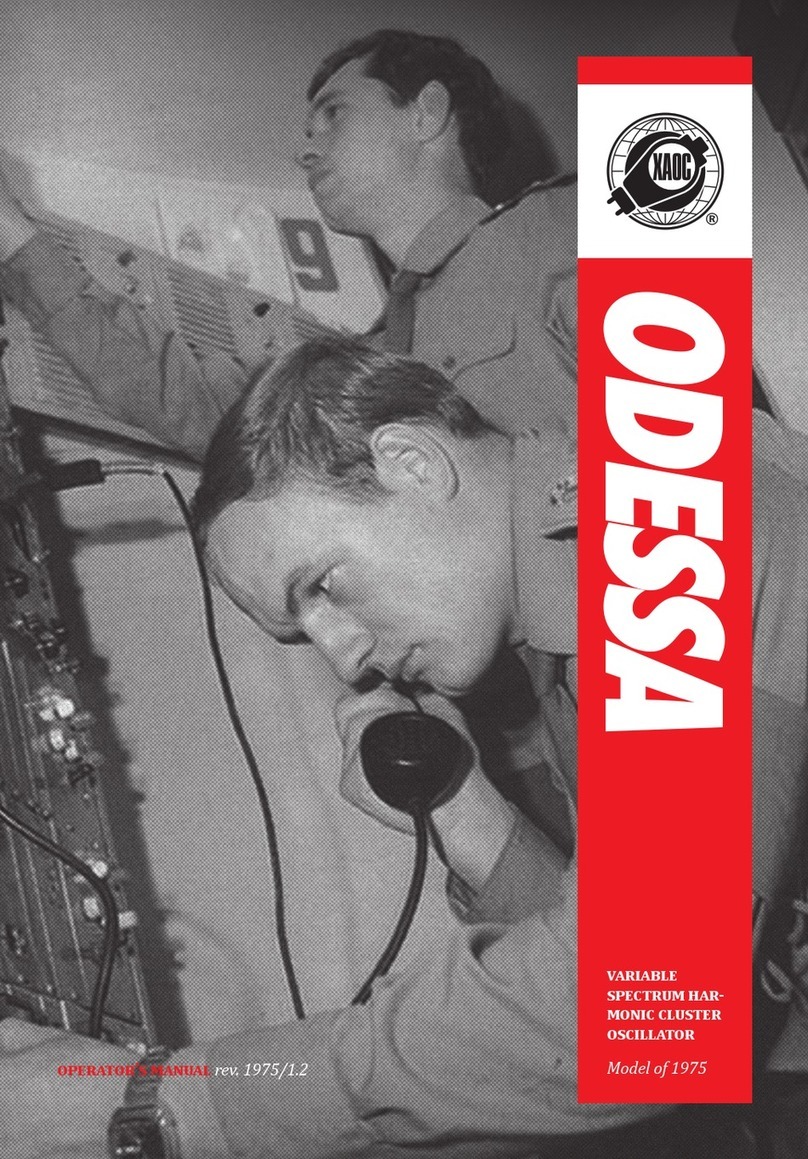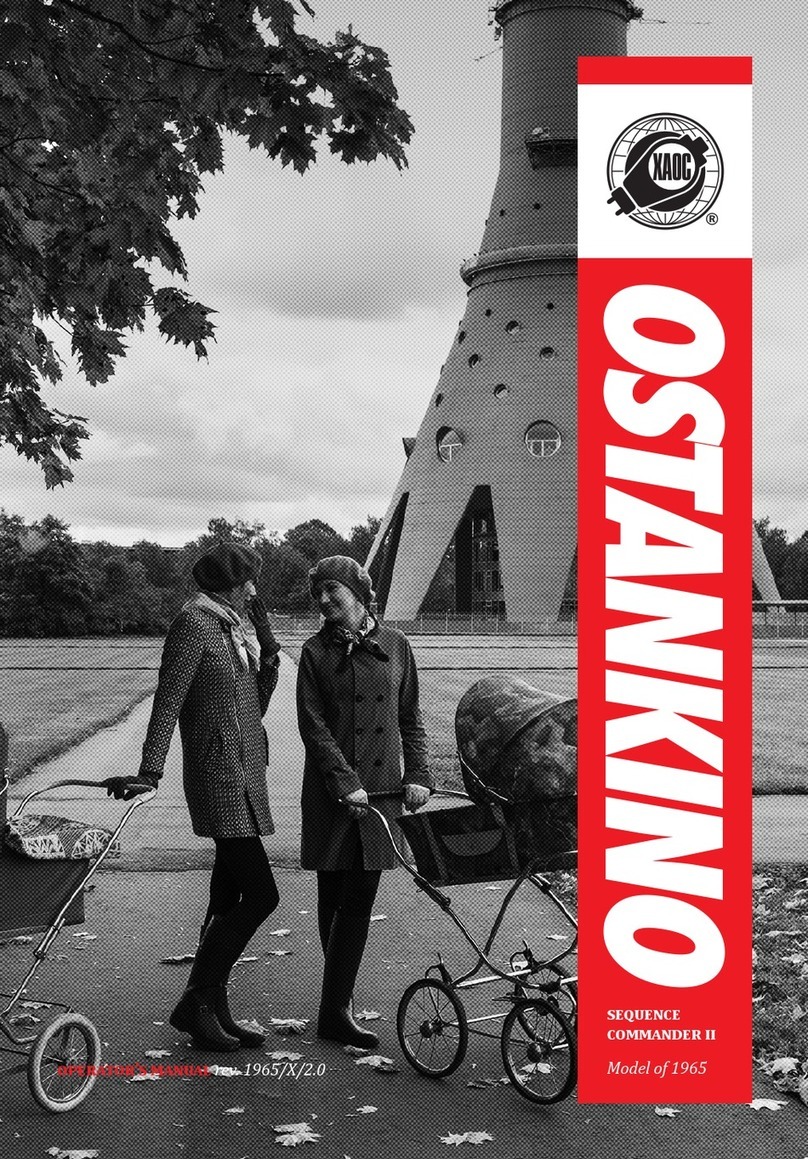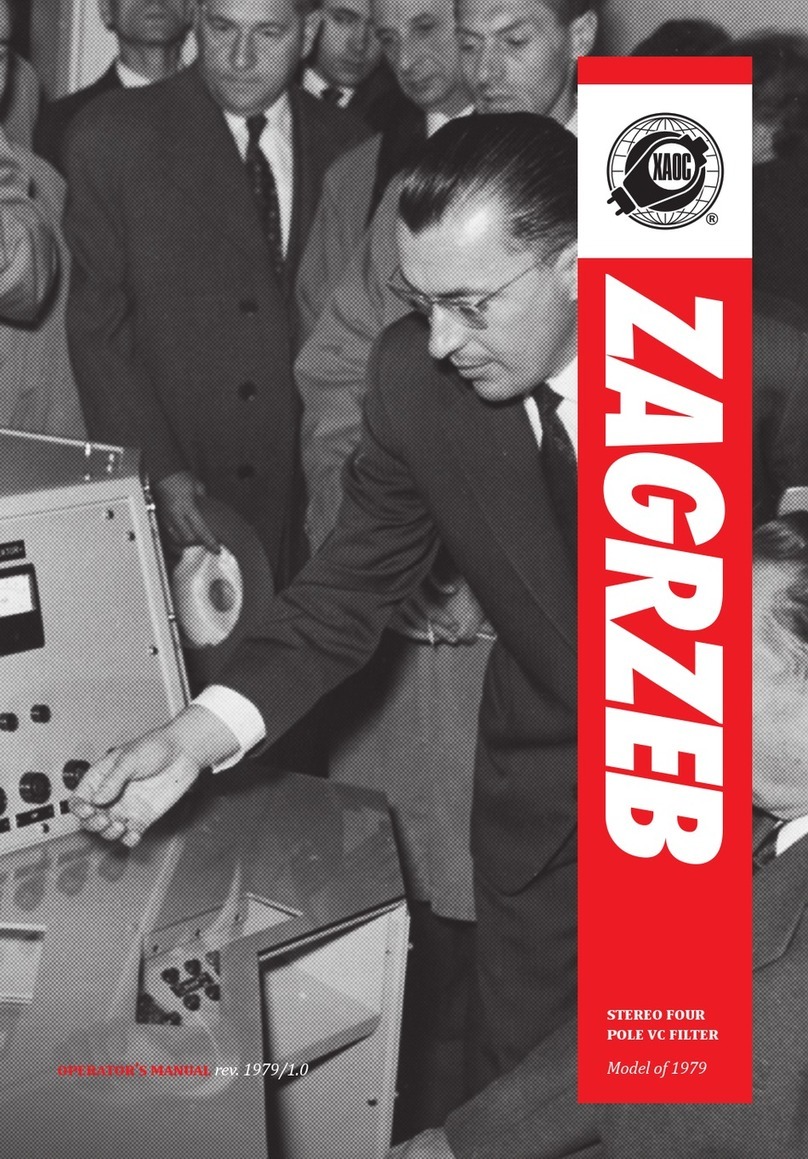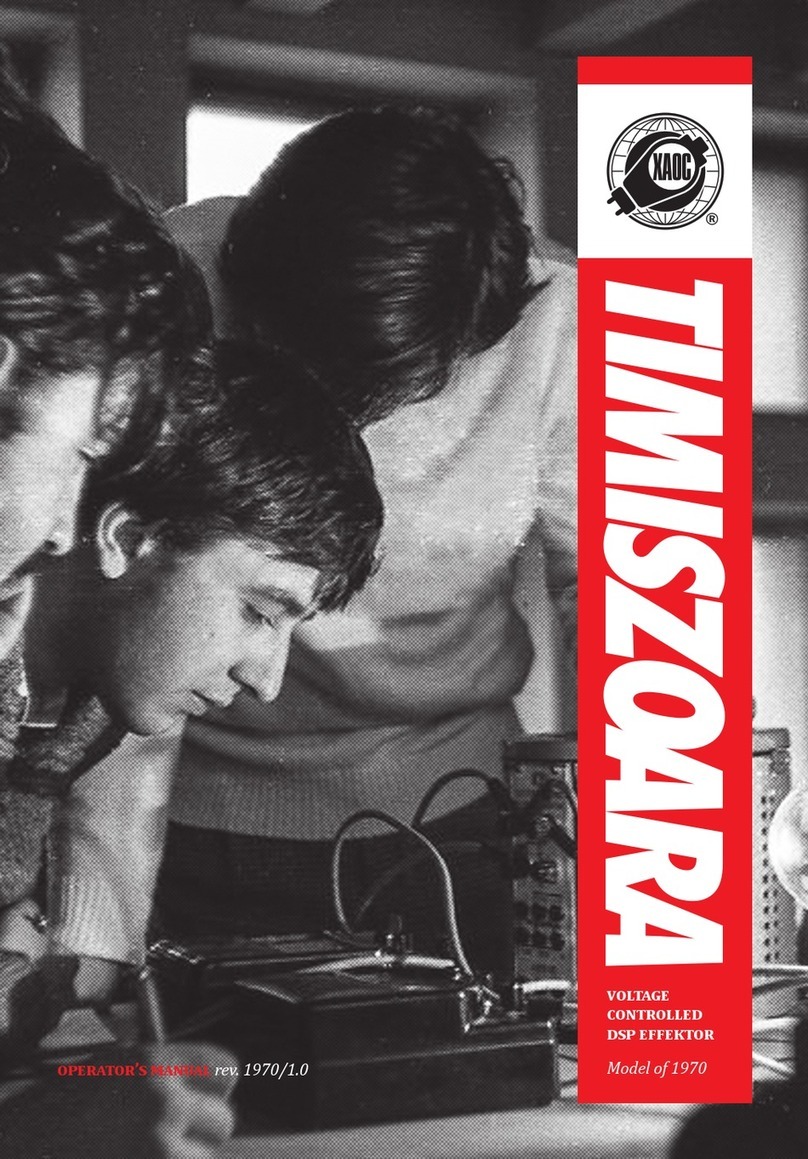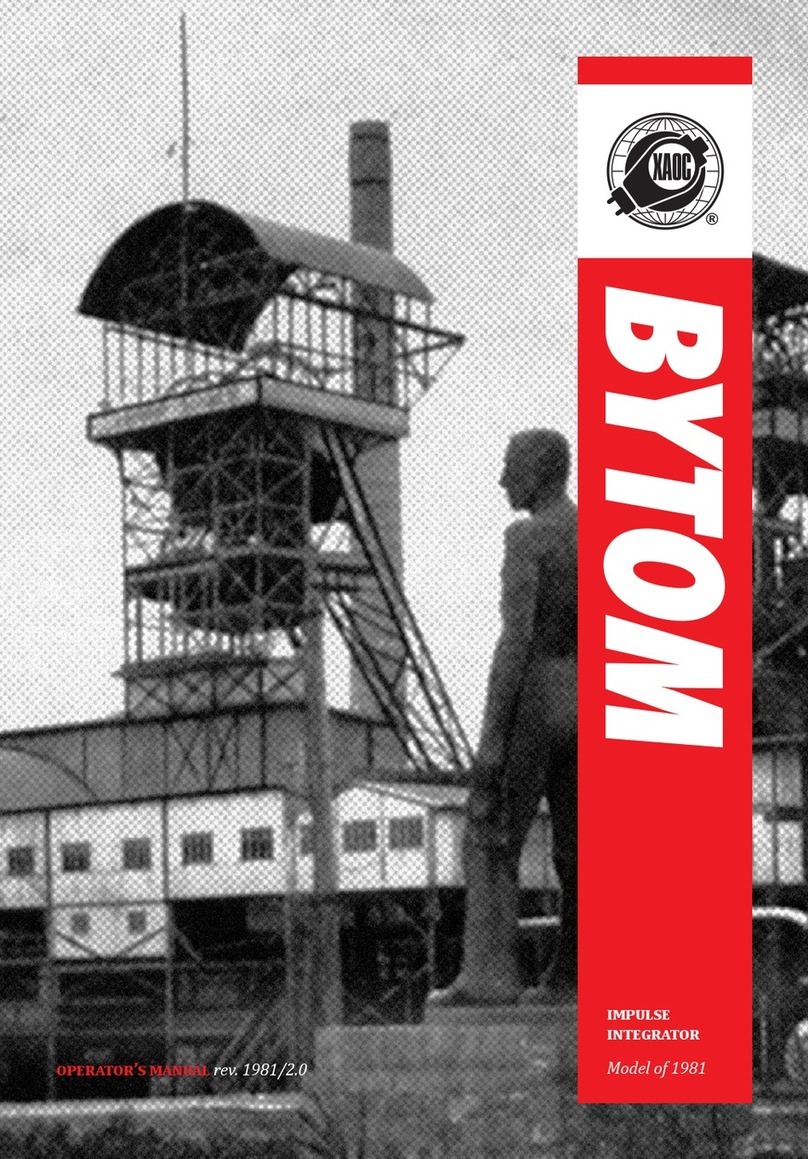
SALUT
Thank you for purchasing this Xaoc Devices
product. Tirana is a compact, expandable volt-
age source with a wide range of uses including
classic step sequencer, modulation source, volt-
age bank, and arpeggiator. Tirana is equally
suited to small and large systems alike, either
as a single utility or chained with more Tira-
na units. This is a second, vastly improved re-
vision to the original 2014 Tirana, featuring
an updated circuit and a new, more powerful
INSTALLATION
The module requires 6hp worth of free space
in the eurorack cabinet. The ribbon type pow-
er cable must be plugged into the bus board,
paying close attention to polarity orientation.
The red stripe indicates the negative 12V rail
and is supposed to match a dot, –12V or red
stripe marks on both the unit and the bus
board. The module itself is secured against
reversed power connection, however revers-
ing the 16-pin header may cause serious
damage to other components of your system,
because it will short-circuit the +12V and +5V
power rails. The module should be fastened
by mounting the supplied screws before pow-
ering up. To better understand the device, we
strongly advise the user to read through the
entire manual before using the module.
MODULE OVERVIEW
To operate, Tirana expects an external clock
source (up to 320Hz) in the clock input sock-
et 3. Patching any stable clock generator—
such as an LFO pulse or another sequencer’s
sync output—causes the sequence steps to
play sequentially in a loop. The value for
each step is adjustable by turning knobs 1-4
1. By default, the voltage set by the knob is
unipolar and within the 0V to 10V range. The
jumper 9 on the back of the module allows
for the selection of bipolar voltages within –5
to +5V range. Another jumper 10 attenuates
the voltage range to 0V to 5V and –2.5V to
-
trol voltages and gate/trigger impulses are
available at cv out 4 and gate 5 outputs.
pressing the corresponding button 2 until its
light deactivates. note: Muting a step does not
remove the step from the sequence. The con-
trol voltage remains present for the selected
step, and only the gate/trigger itself is muted.
SEQUENCE PLAY CONTROL
Sequence direction can be changed by patch-
ing a trigger impulse into the directn input
socket 6. Sequence can be reset to step 1
by patching a trigger impulse into the reset
input 7. Sequence can be transposed (off-
set) by patching a control voltage into the
transp input 8.
TOGGLING GATE VS. TRIGGER
Hold step 1 and step 4 buttons simulta-
neously for 2 seconds to change whether
the gate output generates a gate or trigger
impulse. note: Dynamic gate width modula-
tion is possible because Tirana’s gate width
directly matches that of the external clock
impulse.
STEP MULTIPLICATION AND DIVISION
Each step can be multiplied (repeated) up to
four times (resulting in up to 16 steps in the
sequence). The note length is retained upon
repeat. Alternatively, each step can be divided
to achieve the popular ratcheting effect. The
trigger/gate impulse is generated 2, 3 or 4
times per note. To program these events on
a given step, enter the step menu as follows:
STEP REPEAT
To set a desired number of repeats for a given
step, enter the div·mlt menu by holding the
corresponding step’s button for 2 seconds. The
2
module
explained

